Blueberries are among the few plants that do not require special care from the gardener. But even in this case, you need minimal care for blueberries in the fall in preparation for the winter, in order to get a good harvest of sweet and fragrant berries. The shrub needs to be prepared for the upcoming cold weather - correctly trim the blueberries in the fall, feed the shrub with mineral fertilizers and close for the winter.
Content
Description
Blueberry is a small shrub with falling leaves for the winter, belongs to the Vereskov family. In the people it is often called dropsy, cabbage or blue grapes. The plant prefers the cold and temperate climate of the northern hemisphere. Usually it is found on swampy soils, hills or in coniferous forests.
The highest height of the blueberry bushes is 1m. Its branches are straight with brown or dark gray bark, covered with small hard leaves planted on short petioles. The upper side of the leaves is covered with a waxy coating and has a bluish-green color, the lower is lighter. At the time of flowering, the shrub is covered with small drooping five-toothed flowers of a white or pinkish hue. Then, in their place, blue small oblong-shaped berries are formed, covered with a bluish bloom.
In the Russian climate, ordinary blueberries or some varieties of a garden variety with an early ripening season are successfully grown. In southern regions with a favorable climate, you can grow American tall blueberries. It is distinguished by large berries weighing 10-20 g. The yield is up to 7 kg with proper cultivation.
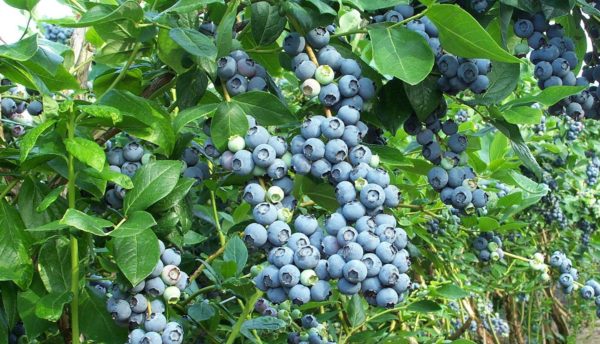
General care recommendations
Care for blueberries in autumn is necessary for good growth of the bush. This is not possible without proper watering. From the beginning of July, the bush is abundantly moistened, since it is then that the formation of fruit buds for the next growing season occurs. With the onset of autumn, the intensity of irrigation is reduced. If the weather is rainy, then irrigation is completely stopped.
Blueberries are fed exclusively with mineral complexes, because it does not tolerate organics. In summer, fertilizers are applied twice. In autumn, it is enough to apply potassium and superphosphate to the soil once. Mineral deficiency causes leaf withering and drying.
In the fall, sanitary shrub pruning is performed. To do this, remove broken, dried or diseased branches. Still pruned are those parts of the plant that were infected with parasites.
In areas with harsh, frosty winters, blueberries must be covered. To do this, shoots are attached to ropes stretched between the supports. From above they are covered with spruce branches. If the temperature in the region does not fall below -25 degrees in winter, it is not necessary to close blueberries for wintering.
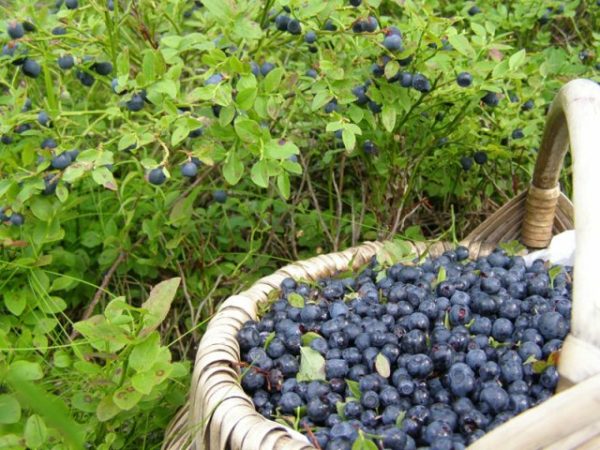
Blueberry Autumn Pruning
This event is one of the mandatory for a good harvest in the next growing season. Ignoring the autumn pruning leads to the rapid degeneration of the cultivated berry into the wild. In spring, a lot of young shoots grow, which takes all the forces of the plant for its development.Due to thickening of the bush, the branches grow weak and thin, the taste of berries deteriorates. A dense crown attracts many parasites and becomes a breeding ground for diseases.
Weak, sick or broken branches need to be cut throughout the year, and not just with the onset of autumn. In spring, it is convenient to cut frozen shoots. In the summer months, overgrown shrubs are harvested. In autumn, the holbika is cut for sanitary purposes.
Forming Cut
Pruning of branches for the formation of the bush is done after the complete cessation of sap flow. From the middle of October, branches that thicken the bush are removed, covering the places with a garden var. This measure protects the plant from infection. Pruning is completed before the end of November so that the bush does not suffer from frost.
At the planted blueberries in the spring, all branches are cut down in the autumn and the root growth that has grown over the summer. After trimming, a sapling of upright columns from 30 to 40 cm long without side branches remains.
 You may be interested in:
You may be interested in:Pruning an adult plant is performed as follows:
- horizontal shoots are cut to a strong vertically directed branch;
- shoots directed deep into the bush or down;
- treetops spoiled by cold or insects;
- branches shorter than 30 cm.
Anti-aging pruning
In adult bushes, shoots are cut to rejuvenate. Then all old, non-fruiting branches are cut down, taking useful elements to their height. After this procedure, young branches grow quickly in the spring and give a good harvest.
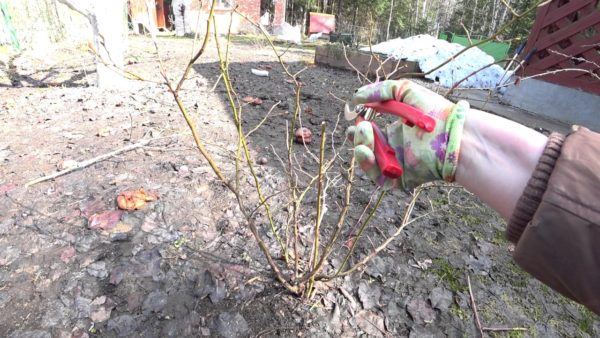
Autumn top dressing
Having removed all unnecessary shoots, the places of cuts on the shrub are treated with garden varieties or with RanNet. This measure will protect the plant from penetration into insect tissue and infection. After this, blueberries are well watered and fertilized. In autumn, mineral complexes enriched in phosphorus and potassium are used. Nitrogen feeding is not used so as not to provoke the growth of the green part.
Fertilize blueberries begin at the age of two. For young specimens take less fertilizing than for overgrown, large plants. In July, urea or ammonium sulfate is introduced, so that the mineral complexes do not fall on the leaves. It is convenient to dilute granules in water in an amount of 40 g per bucket of water and pour soil with this solution, retreating to the bush by 15 cm.
To increase resistance to diseases and reduce the likelihood of pest attacks in the fall, fertilizers with potassium and phosphorus are applied. Such top dressing makes the taste of berries much better. For each adult plant, 40 g of potassium and superphosphate are used.
Half a month before harvesting, the shrub is sprayed with Crystal. This fertilizer is a mixture of useful minerals, does not contain chlorine. It is safe for all types of berries, vegetables and fruit crops. The drug in an amount of 20 g is dissolved in a bucket of water and sprayed with shrubs during hours when there is no active sun. It enhances growth, increases pest resistance and improves crop quality.
Shelter for the winter
Blueberries are a relatively frost-resistant crop. It is able to successfully winter if the air temperature in winter does not drop below -22 degrees. In other cases, the bushes are insulated to prepare blueberries for winter. In frosty but snowless weather, the survival rate of blueberries is significantly reduced. In this regard, in our country, blueberries are always covered for the winter.
Insulation of the bush in the fall is carried out in stages:
- Before the arrival of severe colds, the shoots straighten and bend to the ground. So that they do not rise, they are fixed with special restraining arcs or tied with twine.
- When the first winter frosts strike, blueberries are covered with agrofibre or ordinary burlap. Do not use film for this. It is highly likely that the plant will block and become infected with a fungus.
- When the snow falls, they throw it over a covered bush. Such additional insulation will protect against the harmful effects of the cold.
- With the advent of spring, the coating is removed. Then they examine the blueberries and cut off the tips of the branches, spoiled by frost. Possible frosts are not dangerous for blueberries. Her buds and flowers can withstand temperatures down to -8 degrees.
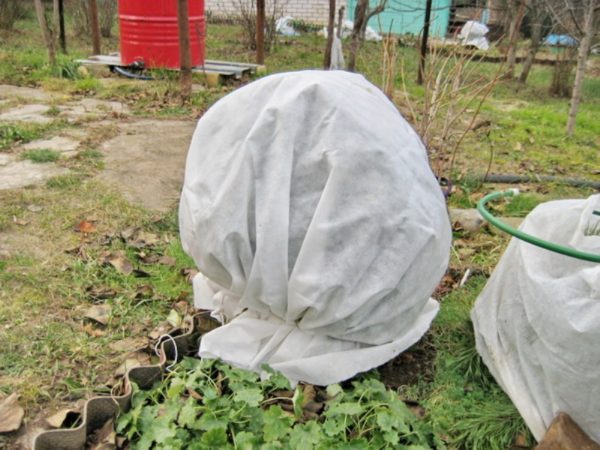
Features of preparing for winter by region
The ideal location for the cultivation of blueberries in our country is recognized as Moscow Region. But even there winters are quite severe, therefore shelter should not be neglected. It is necessary to wrap the bush with burlap and bend to the soil, tied with ropes. Instead of shelter, a pine lapnik is also suitable. Then first bend the branches to the ground, and then cover with a large amount of spruce branches.In Siberia and the Urals, special varieties of blueberries are grown, obtained specifically for these areas. A good option is recognized hybrid varieties of marshmallow blueberries: Canadian nectar, Divnaya, Taiga beauty. Their bushes stretch up to 80 cm and are characterized by good resistance to cold. All preparatory work for them is carried out in the usual manner, but they do not shelter for the winter. They have quite a lot of snow falling usually in these regions.
The climate of the Volga region is not suitable for the cultivation of blueberries. Therefore, this culture is not grown here, but content with imported berries.
Mistakes fall care and preparation for winter
Although blueberries are not considered unpopular plants, some gardeners take care of them incorrectly. This reduces the yield and affects the taste.
There are traditional mistakes in caring for blueberries:
- Too much watering causes waterlogging of the soil. Because of this, the roots lack oxygen during the growing season, and in winter, the risk of freezing the root system increases.
- Exceeding the permissible norm when adding acetic acid threatens the death of the fungus mycorrhiza, which contributes to the proper assimilation of useful elements.
- Growing a bush in a shady place or thickening too much causes disease and degrades the quality of the berries.
- Refusal of top dressing causes a gradual deterioration in the appearance of the bush and reduces the quality of the berries. Therefore, fertilizers must be applied at least once every 5 years.
- Use for fertilizing organic and chlorine-containing fertilizers. They negatively affect productivity and are able to destroy bushes.
- Loosening the soil to a greater depth leads to damage to the closely lying root system of the shrub. Therefore, loosening the soil is allowed only 3 cm.
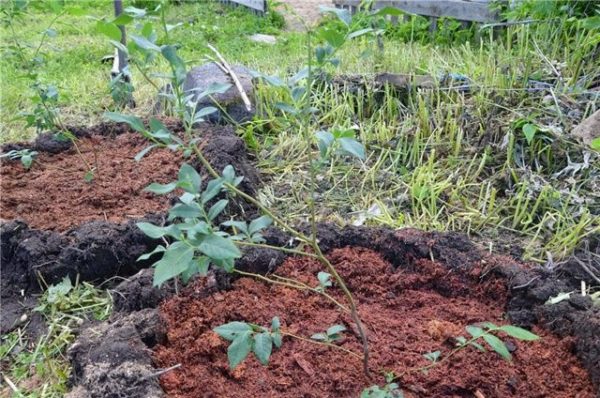 You may be interested in:
You may be interested in: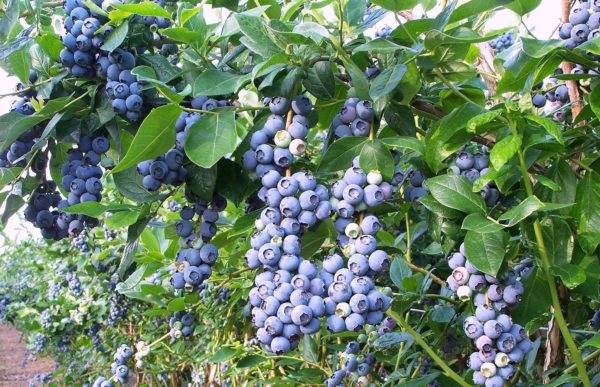
Finally
The main care for blueberries consists in timely and high-quality pruning, adding mineral fertilizing to the soil and creating an acidic environment. Otherwise, the culture turns into a wild game, the taste of berries deteriorates and their size decreases.

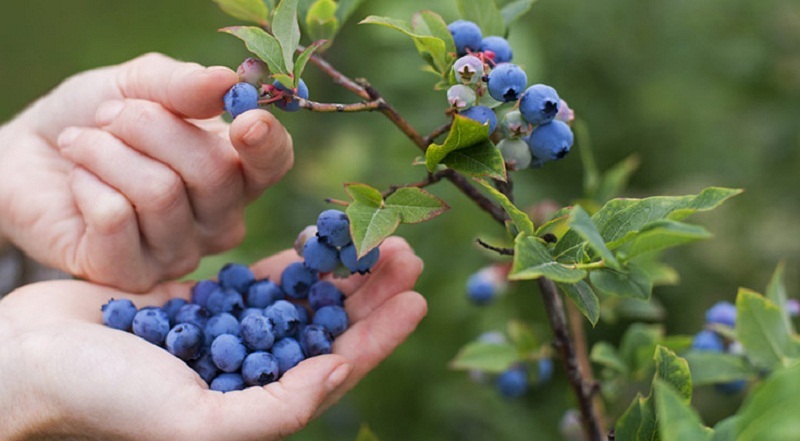
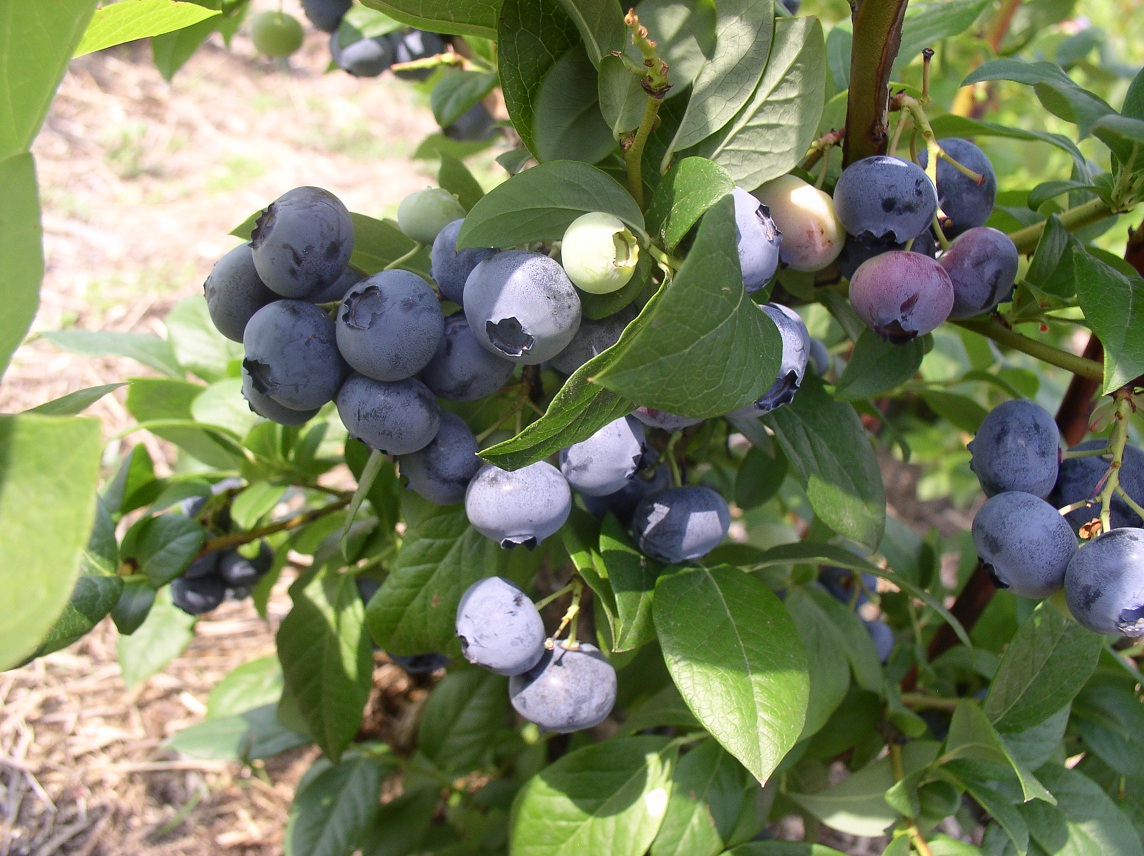
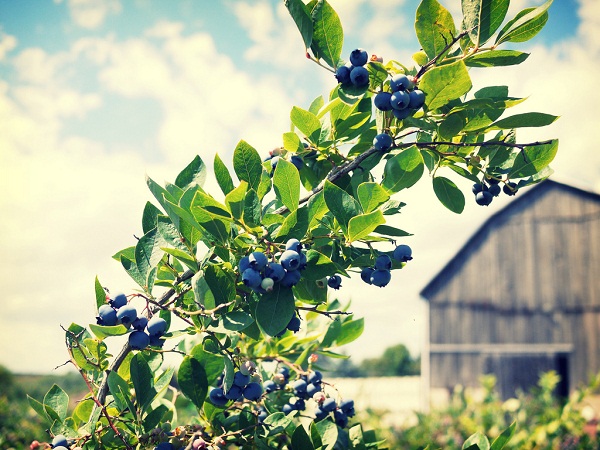
Valeri Mishnov
All this nonsense about bush garden blueberries. The light blue color of the fruit does not mean at all that it is a blueberry. The author did not see blueberries in the eye. Garden bush blueberries were imported from Canada and in Scandinavia, breeders have bred many varieties, both self-fertile and self-infertile. Pay attention to this when breeding a very useful plant.